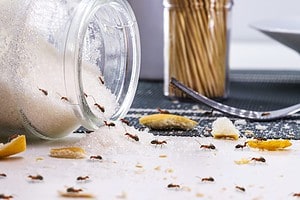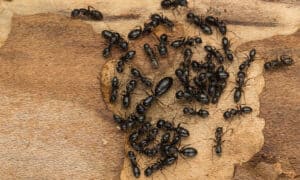Ants play a vital role in maintaining the health of your lawn. These tiny insects aerate the soil by creating intricate tunnels, improving water and nutrient absorption. They also assist in breaking down organic matter, contributing to soil fertility. Furthermore, ants help control pests by preying on harmful insects, reducing the need for pesticides. Overall, the presence of ants in your lawn can contribute to its overall vitality.

With an aggressive ant species, like the red imported fire ant, intervention may become necessary.
©NOTE OMG/Shutterstock.com
However, intervention may become necessary if an ant hill occurs in a bad spot that could cause an accident or if there is an infestation. Another scenario calling for intervention would be when an aggressive ant species, like the Florida harvester ant (Pogonomyrmex badius), the Maricopa harvester ant (Pogonomyrmex Maricopa), or the red imported fire ant (Solenopsis invicta) moves in.
Ants are Lawn Friendly (most of the time…)
Having ants in your lawn can contribute to its overall health. Ants are burrowers and their movement through the soil helps to aerate it. By creating tunnels, they enhance soil structure, allowing better water infiltration and nutrient absorption for plant roots. Ants play a crucial role in breaking down organic matter in the soil. They feed on dead insects, decaying plant material, and other organic debris, accelerating the decomposition process. This helps recycle nutrients and enrich the soil. As ants consume organic matter, they process and digest it. Their excretions, called ant castings, are rich in nutrients like nitrogen, phosphorus, and potassium. These castings act as natural fertilizers.
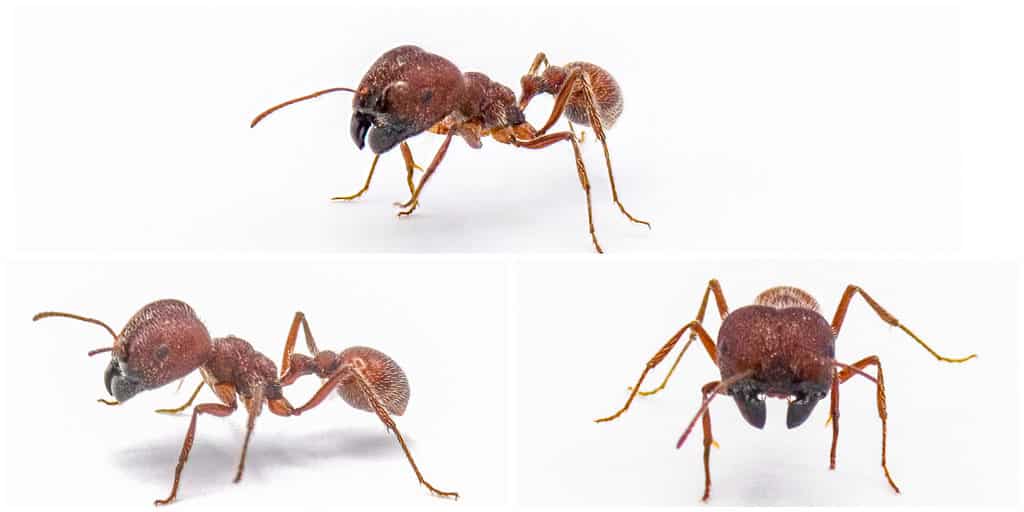
The Florida harvester ant (pictured) is a species in the
Pogonomyrmexgenus.
©iStock.com/Dan Rieck
Ants are an integral part of the ecological web, interacting with other organisms, and contributing to the overall biodiversity of your lawn. These benefits are associated with moderate populations and specific species. If you have an overwhelming infestation or aggressive ants that may cause damage or pose a threat, keep reading to learn about surprisingly easy (many can be found right in your kitchen!) and effective DIY management strategies.
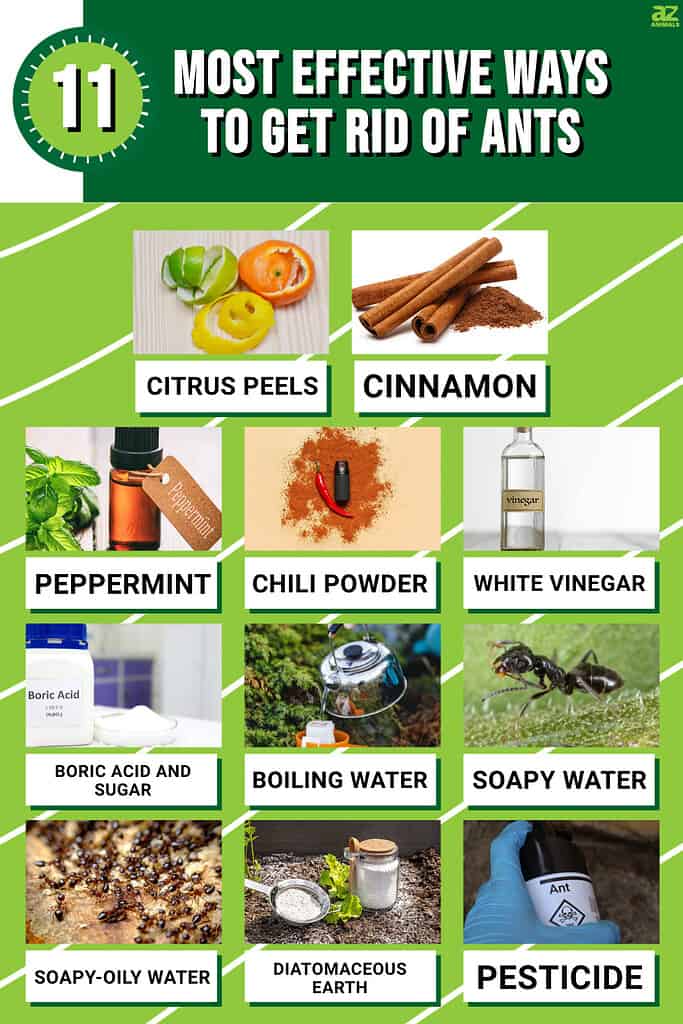
Keep reading to discover the 11 most effective ways to get rid of ants in your yard.
Citrus Peels
Using citrus peels as a natural deterrent for ants is a viable approach. Citrus fruits, such as oranges, lemons, and grapefruits, contain natural compounds that ants find unpleasant. Citrus peels contain limonene, which ants find repulsive. Save the peels from citrus fruits. Place the citrus peels near ant trails, entry points, or areas where ants are active. You can also rub the peels along baseboards, window sills, or other ant-accessible areas. Over time, the scent of the citrus peels may fade. Replace the peels with fresh ones regularly to maintain their effectiveness. While citrus peels are generally safe for use around humans and pets, they may attract other pests or become a food source for mold or fungi if left in place for extended periods. Monitor the situation and adjust the approach as needed.

Citrus fruits, such as oranges, lemons, and grapefruits, contain natural compounds that ants find unpleasant.
©PosiNote/Shutterstock.com
Cinnamon
Both cinnamon powder and cinnamon oil can be used to deter ants. Sprinkle cinnamon powder directly on ant trails, entry points, or areas where ants are active. You can also create barriers by drawing lines or circles with cinnamon powder to prevent ants from crossing.
Mix a few drops of cinnamon essential oil with water in a spray bottle. Shake the bottle gently to ensure the oil is well-distributed in the water. Spray the diluted cinnamon oil directly onto ant trails, entry points, or areas where ants are active. Cinnamon has a strong scent that ants find displeasing. The scent can repel ants and deter them from entering or crossing treated areas. The scent of cinnamon can disrupt ant trails and interfere with their communication, making it difficult for ants to navigate and find food sources. Both cinnamon powder and cinnamon oil can provide temporary relief from ant activity.
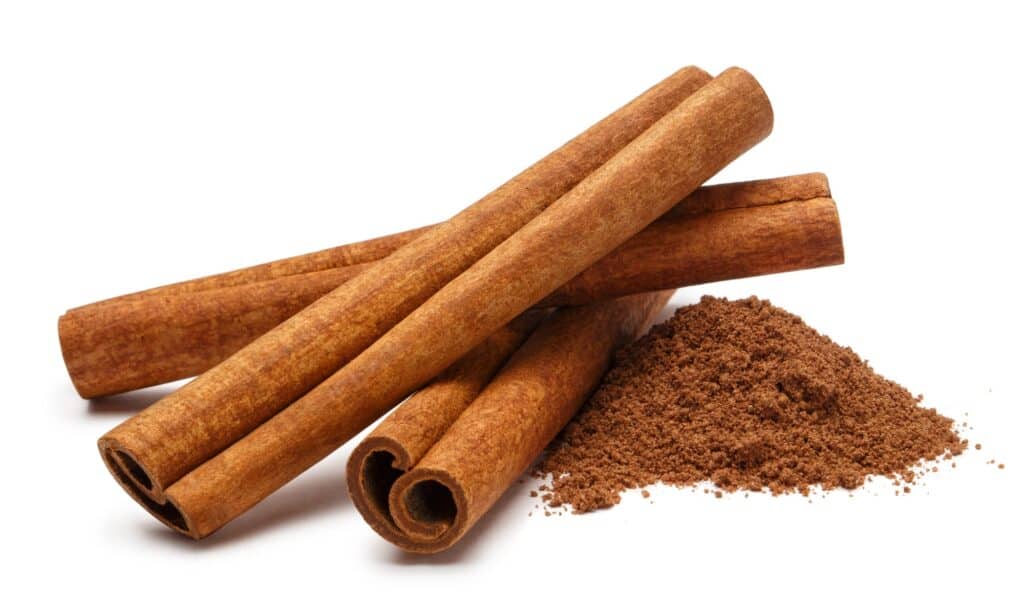
Cinnamon has a strong scent that ants find displeasing.
©iStock.com/Marat Musabirov
Peppermint
Peppermint is another scent that can be an effective natural deterrent to ants. Ants are sensitive to strong odors, and the strong scent of peppermint oil repels them. The scent of peppermint oil can disrupt ant trails and interfere with their communication, making it difficult for ants to navigate and find food sources. Mix a few drops of peppermint essential oil with water in a spray bottle. Soak cotton balls in peppermint oil. Place the cotton balls directly onto ant trails, entry points, or areas where ants are active. Alternately, a few drops of peppermint oil diluted in water can be sprayed in areas in which ant activity has been recorded. Over time, the effectiveness of the peppermint oil will diminish. at that time, replace the cotton balls as needed to maintain the repellent effect.
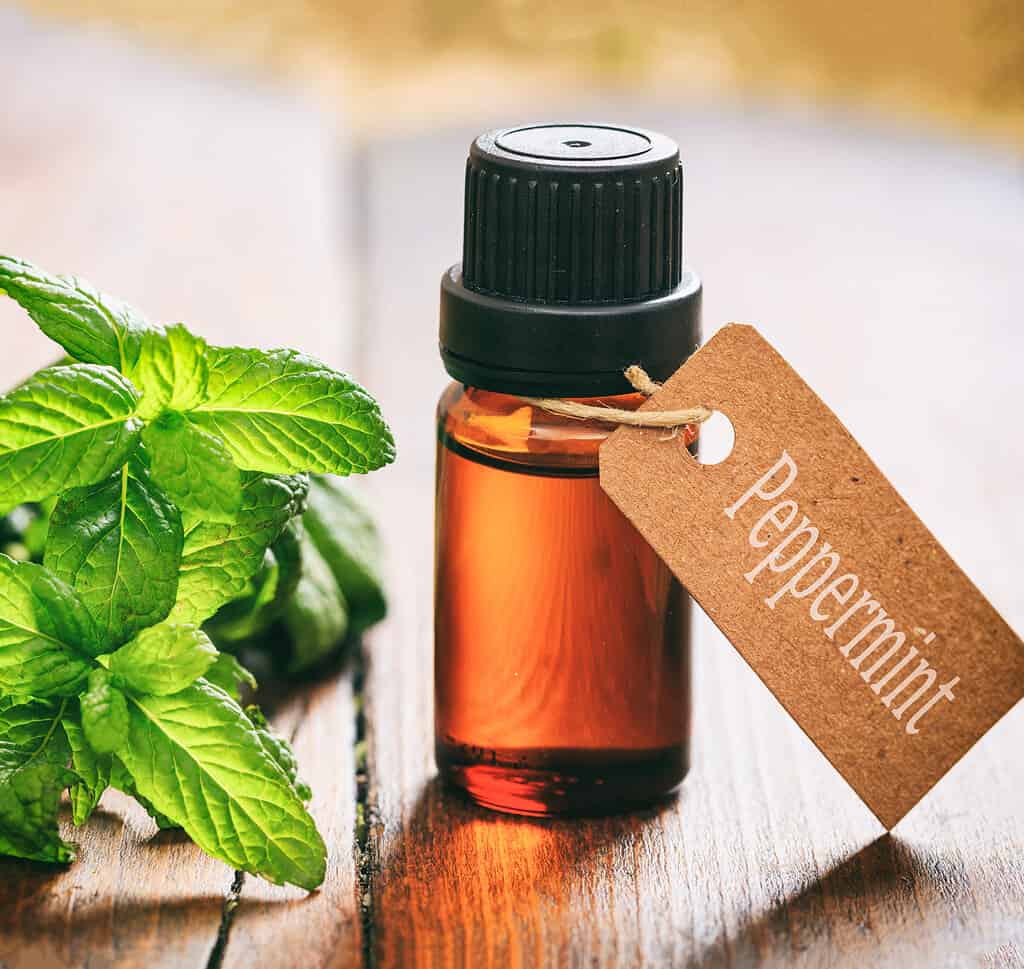
Peppermint is another scent that can be an effective natural deterrent to ants.
©iStock.com/Rawf8
Chili Powder
Chili powder, like the aforementioned spices, deters ants thanks to its strong and pungent smell, which ants don’t like. The strong scent and capsaicin compounds present in chili powder can be irritating to ants and disrupt their trail-following abilities. Sprinkle chili powder directly on ant trails, entry points, or areas where ants are active. The effectiveness of the chili powder will diminish due to weather conditions or ants finding alternative routes. Monitor the situation and reapply the chili powder as needed.

Chili powder and pepper spray rely on a strong scent and capsaicin compounds for a deterrent.
©Pixel-Shot/Shutterstock.com
White Vinegar
White vinegar disrupts ant trails, but it may not necessarily kill them. Identify the paths that ants take and locate their entry points into your home or areas of infestation.
Mix equal parts of white vinegar and water in a spray bottle. Spray the vinegar solution directly onto ant trails, entry points, or areas where ants are active. Focus on saturating the areas where ants are most concentrated. Ants rely on pheromone trails to navigate and communicate with each other. The strong scent of vinegar can disrupt these trails, making it difficult for ants to find their way. While vinegar can help deter ants but it will not eliminate an entire colony. Ants are resilient and may find alternative routes or re-establish trails over time.

White vinegar disrupts ant trails, but it may not necessarily kill them.
©focal point/Shutterstock.com
Boric Acid and Sugar
Boric acid and sugar can be combined to create an effective homemade bait for controlling ants.
In a container, combine equal parts of boric acid and sugar. The sugar acts as an attractive bait, while the boric acid acts as a toxic substance that will be carried back to the ant colony. Sprinkle the bait mixture near ant trails, entry points, or areas where ants are active. Use small containers, such as bottle caps or shallow dishes, to hold the bait and protect it from moisture. Check the bait regularly and replenish it as needed. If the bait becomes contaminated or runs out, ants may lose interest, so it’s important to keep the bait fresh!
Boric acid is a low-toxicity substance to humans and pets but is highly toxic to ants. When ants consume the bait, the boric acid affects their digestive system, leading to their demise. Ants that come into contact with the bait may also carry it back to the colony, potentially affecting other ants as well.
Even though it is considered minimally toxic to kids and pets, it’s important to exercise caution when using boric acid. Ensure that the bait is placed in areas that are inaccessible to both pets and children.
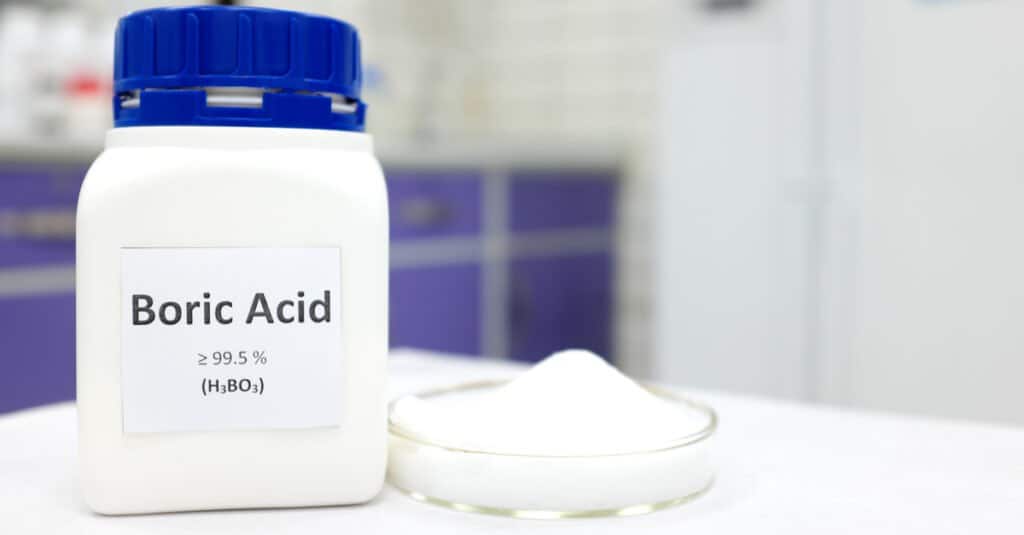
When mixed with sugar, boric acid becomes an attractive bait to ants, leading to their demise.
©sulit.photos/Shutterstock.com
Boiling Water
Pouring boiling water into ant nests can be an effective and relatively simple method for controlling ants, especially for small colonies or nests located in open areas. Boiling water can destroy the ants and potentially damage the structure of the nest, disrupting their colony. Boiling water can cause burns and injury, so it’s essential to take safety precautions. Be cautious and avoid pouring water on yourself or others. Locate the ant nest accurately before pouring the boiling water. Follow the ant trails and observe their behavior to determine the main entry points and the nest location. Pouring boiling water directly into the nest is most effective.
It requires a significant amount of boiling water to ensure it reaches deep into the nest and the ants. A kettle or large pot of boiling water may be required. Pour the water slowly and evenly to cover the nest thoroughly. For larger or more resilient ant colonies, a single application of boiling water may not be sufficient. Monitor the situation and repeat the process if necessary.
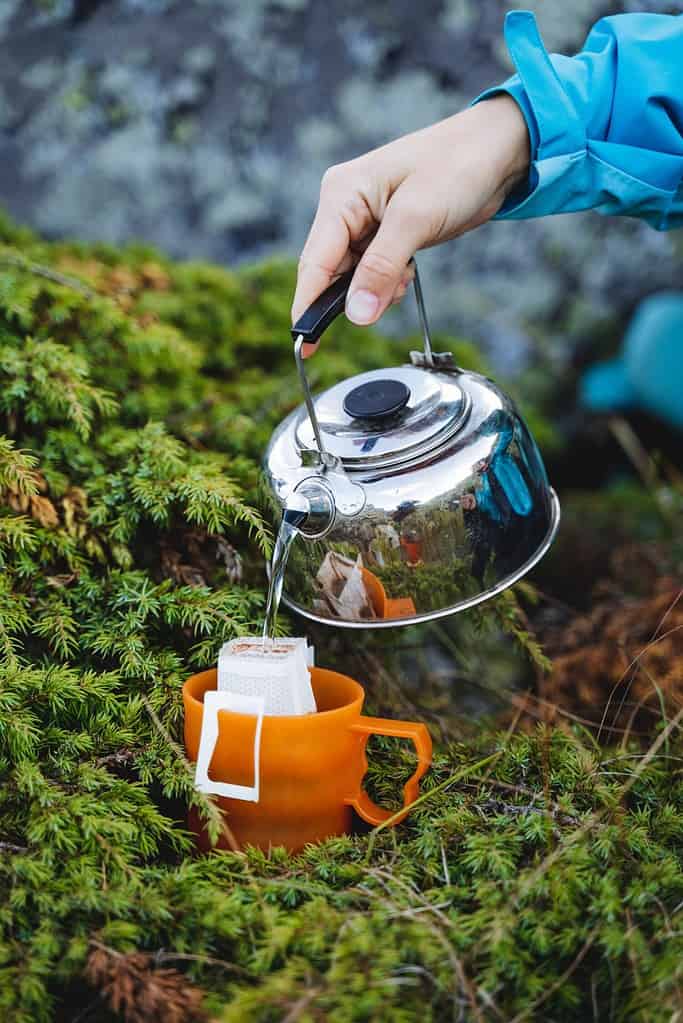
Boiling water from your tea kettle can rid your yard of ants if poured into the nest.
©Aleksey Matrenin/Shutterstock.com
Soapy Water
Soapy water is another effective method for controlling ants, particularly for surface-dwelling ants or when dealing with smaller infestations. The soap in the water disrupts the ants’ exoskeleton and can suffocate them. Mix a few tablespoons of liquid dish soap in a bucket of water. The soap should be mild and non-toxic to plants. Follow the ant trails to identify their entry points and locate the nests or areas of high activity. Those areas will be the focus of treatment. Pour the soapy water directly onto the ant trails, nests, or areas where the ants are congregating. Ensure thorough coverage, and be cautious not to over-water the area. Observe the effectiveness of the treatment. If the ant activity persists, you may need to repeat the process or try alternative control methods.
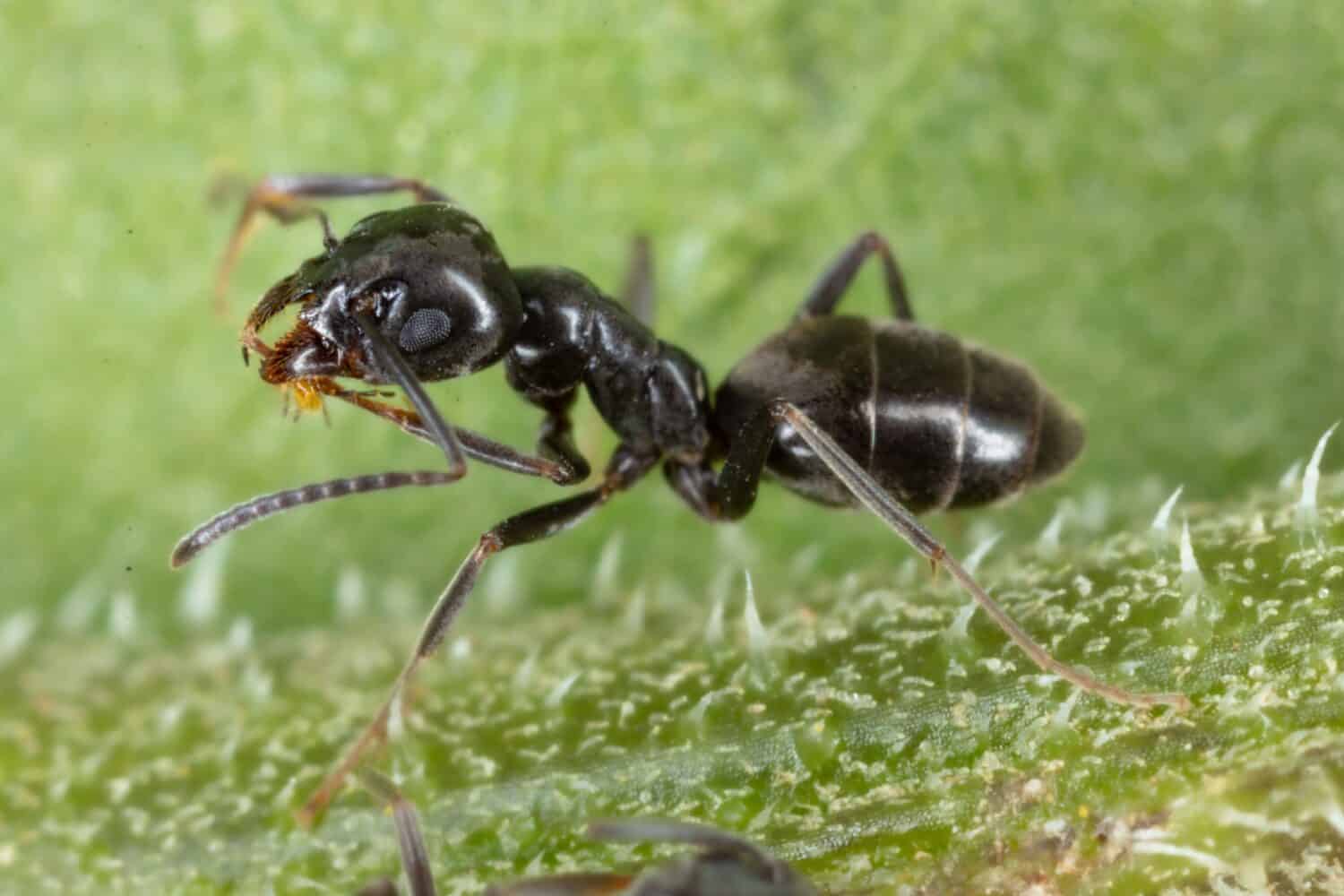
Soapy water works, particularly for surface-dwelling ants, like the odorous house ant (
Tapinoma sessile)
©Wirestock Creators/Shutterstock.com
Soapy-Oily Water
Soapy-oily water can be used as a homemade solution for controlling surface-dwellers. The combination of soap and oil can effectively suffocate and repel ants. Mix a small amount of liquid dish soap with water in a bucket. Add a few tablespoons of vegetable oil or cooking oil to the soapy water. Stir the mixture gently to combine the soap and oil. Identify the ant trails, entry points, or nests where the ants are active.
Pour the soapy-oily water directly onto the ant trails and nests. Ensure thorough coverage, targeting the areas where ants are most concentrated. The soap in the solution disrupts the ants’ exoskeleton and the oil adds a suffocating effect, further enhancing the effectiveness of the treatment. However, it’s important to note that the soapy-oily water method may not reach deep enough into the soil to eliminate underground nests.

Soapy-oily water, poured on nests, is a good deterrent for surface-dwelling pavement ants (
Tetramorium).
©Ezume Images/Shutterstock.com
Diatomaceous Earth
Diatomaceous earth can be an effective and natural solution for controlling ants. Diatomaceous earth is a fine powder made from the fossilized remains of diatoms, a type of algae. Ensure that you purchase food-grade diatomaceous earth, as other forms may contain additional chemicals or additives that can be harmful to humans, pets, or the environment. Sprinkle a thin layer of diatomaceous earth in areas where you have observed ant activity, such as along ant trails, or near entry points.
Diatomaceous earth works by physically damaging the exoskeleton of the ants, causing them to dehydrate and eventually die. Be aware that diatomaceous earth is an equal opportunity killer and cannot differentiate between pests and beneficial insects. Minimize the potential harm to beneficial insects by applying the diatomaceous earth judiciously and selectively, directly to specific problem areas only. Diatomaceous earth is effective only when it is dry, so reapply it after rain or when it becomes damp. It is recommended to reapply the powder after a few days if ant activity persists.

Be aware that diatomaceous earth cannot differentiate between pests and beneficial insects.
©FotoHelin/Shutterstock.com
Pesticides
Pesticides should only be considered as a final attempt for ant control after other methods have proven ineffective. It’s important to use pesticides responsibly and consider the potential risks and effects on the surrounding wildlife. Select a pesticide that claims to effectively control ants. Consider using low-toxicity or environmentally friendly options when possible. Carefully follow all directions, including dosage, application methods, safety precautions, and proper storage and disposal guidelines. Apply the pesticide specifically to areas with ant activity, entry points, or ant nests. Avoid broad spraying in non-targeted areas to minimize potential harm to beneficial insects and the environment.
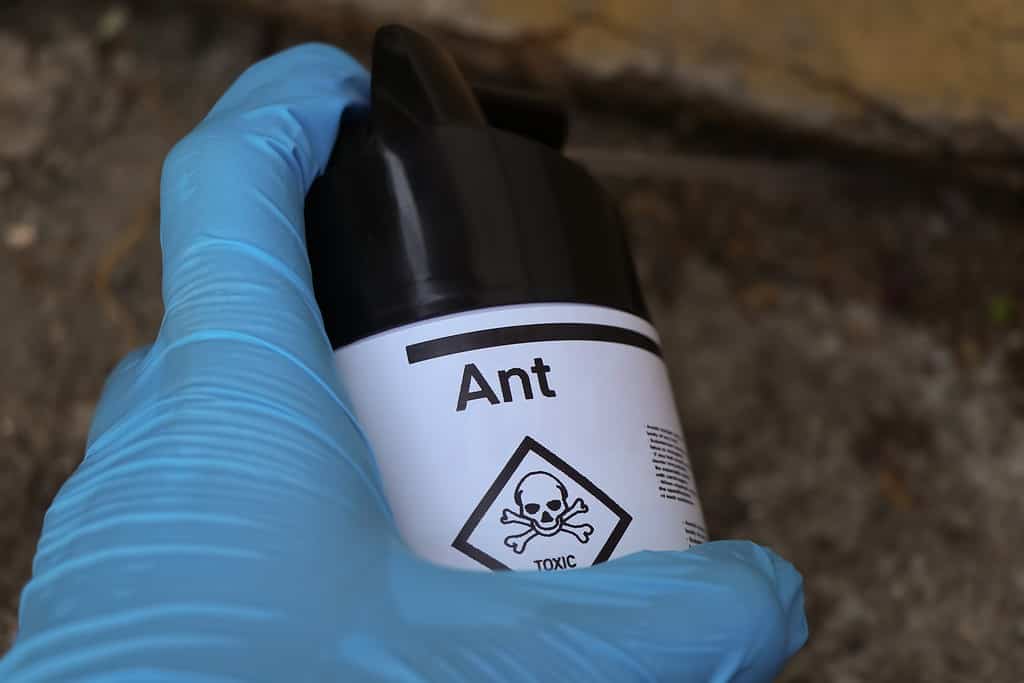
Pesticides should be considered as for ant control only after other methods have proven ineffective.
©chemical industry/Shutterstock.com
If you are unsure about pesticide selection or application methods, or if the ant infestation is severe and challenging to control, consider getting professional help. They have experience and can assess the situation, recommend appropriate pesticides, and apply them safely and effectively. Remember that the use of pesticides should be a last resort and should be approached with caution. Minimize pesticide use whenever possible and consider non-chemical methods, integrated pest management approaches, or natural remedies before resorting to pesticides.
Summary of the 11 Most Effective Ways to Get Rid of Ants
| Type of Deterrent | How It Works |
|---|---|
| Citrus Peels | Contains compounds/scents ants don’t like. |
| Cinnamon | Ants dislike the scent. |
| Peppermint | Scent disrupts ability to follow trail and find food. |
| Chili Powder | Scent is irritating and disrupts trail-following ability. |
| White Vinegar | Pungent scent disrupts trail-following ability. |
| Boric Acid and Sugar | Sugar serves as bait; Boric acid kills. |
| Boiling Water | Destroys nests and ants. |
| Soapy Water | Disrupts the exoskeleton and suffocates ants. |
| Soapy-Oily Water | Disrupts the exoskeleton and suffocates ants. |
| Diatomaceous Earth | Causes dehydration and eventual death. |
| Pesticide | Poisons ants. |
The photo featured at the top of this post is © iStock.com/Cabezonication
Thank you for reading! Have some feedback for us? Contact the AZ Animals editorial team.




